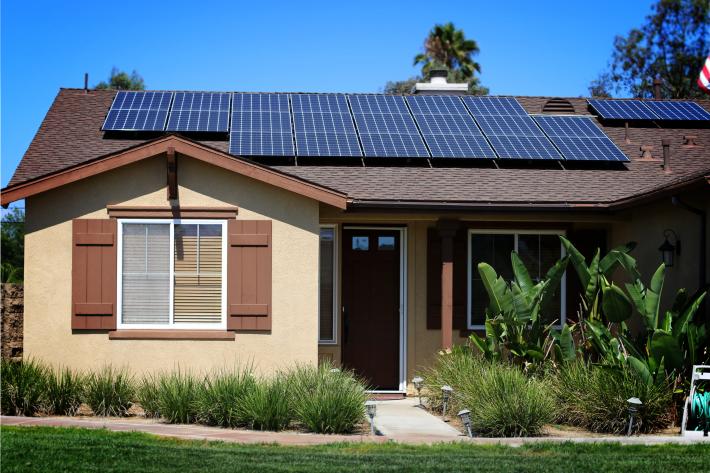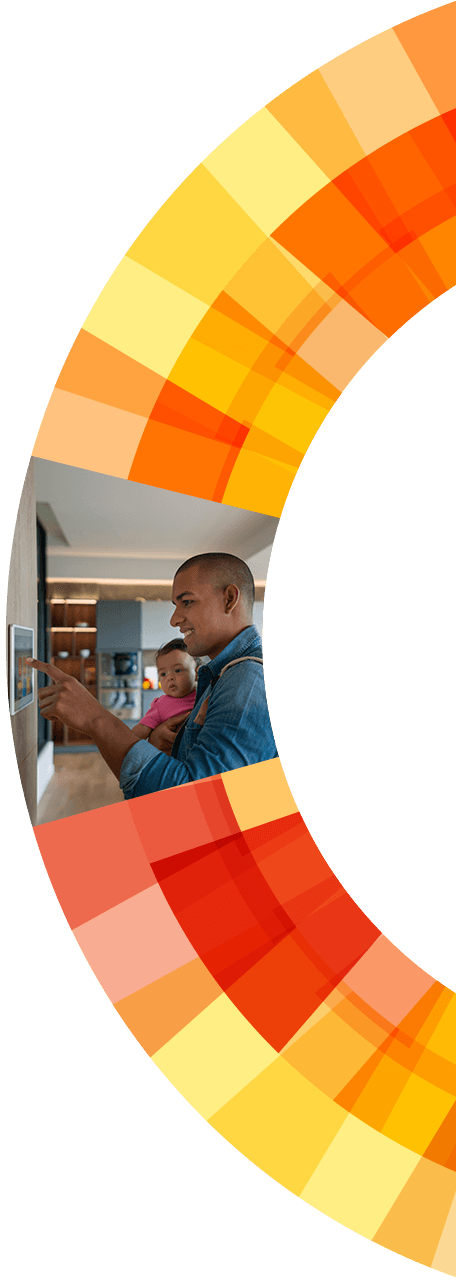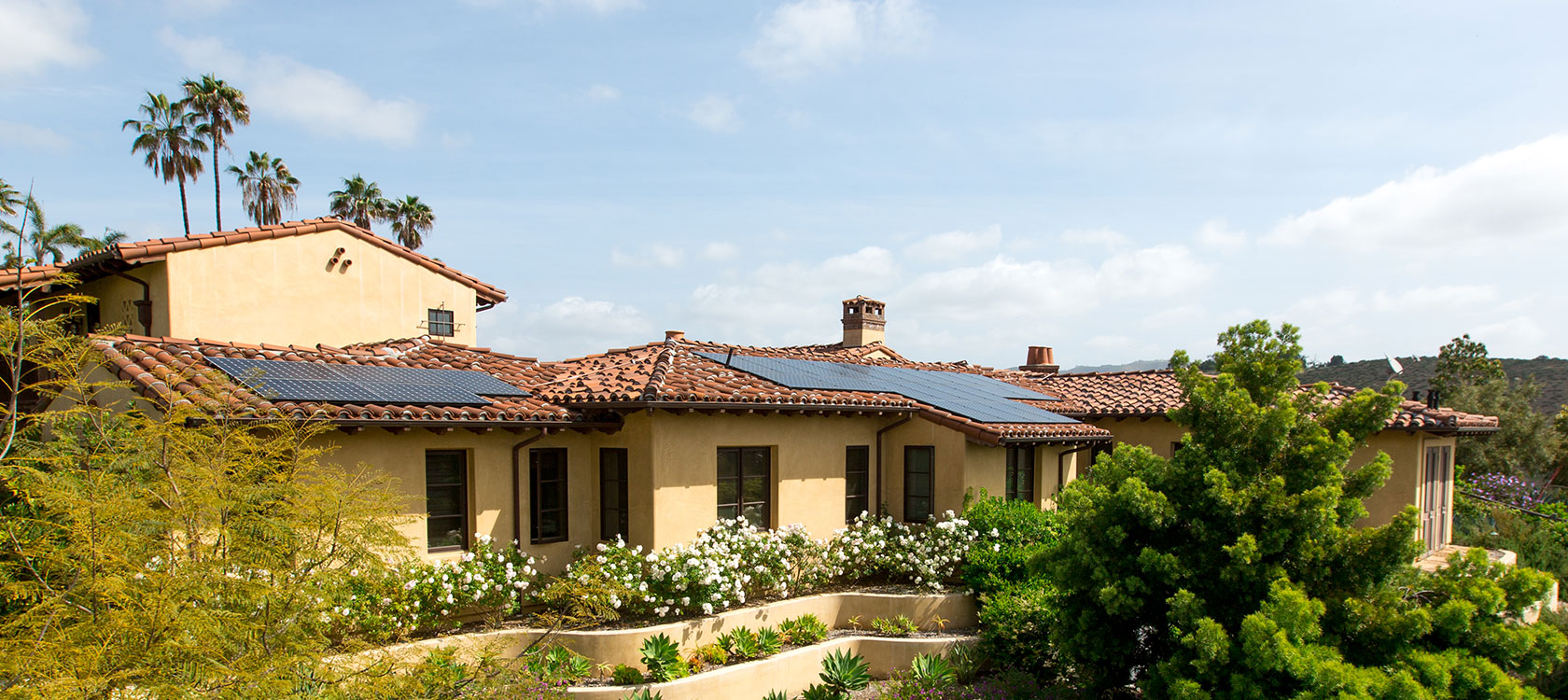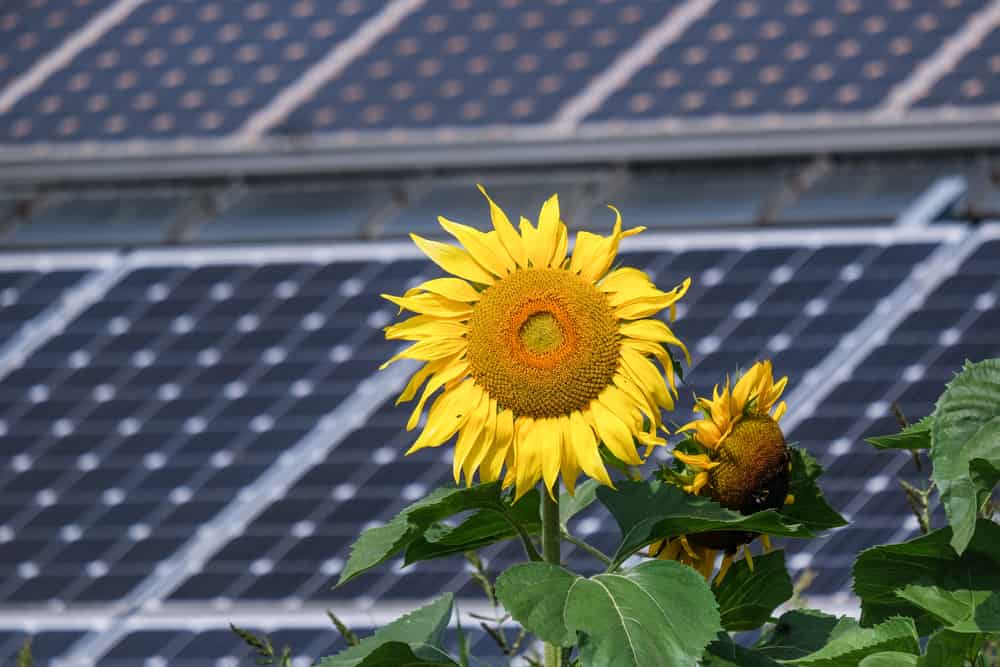
If you’re shopping for solar in San Diego, you’ve probably heard the word inverter. Or maybe you heard the word micro inverter. If your solar company didn’t explain to you what these items are, fear not, you’re in the right place.
We’ll break down the function of string inverters, micro inverters, and power optimizers. If you didn’t read the post on solar and shade, you should do that after reading this as these three technologies all relate to shade.
String Inverters
Solar panels create electricity in the form of Direct Current (DC) the moment the solar cells are in sunlight. Homes utilize Alternating Current (AC) and so, power created by solar panels must be changed. This is where inverters come in. Inverters change DC to AC.
String inverters vary in size and capabilities and are usually mounted near a home’s electrical panel.Depending on the size of the solar system, any number of inverters may be needed, but in most cases 1-2 inverters are used.
String inverters are called such because when used, a solar array is essentially broken up into small subgroups – not physically, but rather by their output – called strings. Inverters treat an entire string as one massive panel. Because of this, it’s important that shade not be allowed to affect a solar system when string inverters are used. If one panel is covered in shade, it’s diminished output will be reflected in the entire string.
For example, if one panel in a string is partially shaded and its output drops dramatically (say 20%), then the entire string’s output is diminished by 20% – even if the other panels are not shaded.
This is where microinverters and power optimizers come in.
Micro inverters
Now that you understand how DC from the solar panels needs to be converted to AC for your home to use, think about that process happening on a panel level rather than all together at a string inverter.
Micro inverters are small inverters mounted to the racking behind every solar panel in an array. Because they are able to invert the electricity on a per module basis, they are useful on arrays that are certain to be affected by shade since one panel’s output doesn’t affect the output of adjacent panels (no strings).
When using a micro inverter setup, every solar panel must have a micro inverter attached, regardless of it being affected by shade or not.
Micro inverters, such asEnphase micro inverters, are easy to install and allow for module-level-monitoring. Downside to them are cost, heat generation, and limited maximum power input.
Power Optimizers
Power optimizers are used with string inverters to negate the effects of shade, sort of in the way micro inverters do. Like micro inverters, power optimizers are attached to the racking behind every solar panel in a solar array.
Power Optimizers, such as SolarEdge optimizers, offer per-module Maximum Power Point Tracking and mitigate all types of modules mismatch-loss, from manufacturing tolerance to partial shading, like micro inverters. They also allow for module-level-monitoring.
A power optimizer with string inverter setup still requires all the wiring and trunking of the panels for stringing.
What to Choose
If after reading this you are still confused on what to use for you solar installation, don’t worry, we’ve got you’ve covered! This is just one aspect of a solar array that our Solar Energy Consultants consider when designing systems. Some solar companies will push micros, others will push optimizers. At Baker, we have every solar technology at our disposal and our team of experts designs custom solar solutions for every customer.
It’s hard to say, “Use a micro inverter in situation A” because it really does depend on the situation. Shade varies – hard shade, soft shade, shade that lasts ten minutes, shade that lasts three hours.
If you’re considering making the switch to solar, look no further. Give us a call or click here to start the process. We’ve been in San Diego for over 83 years! Our team of experts won’t try to sell you solar, they’ll inform you of your options and empower you to make a choice.




